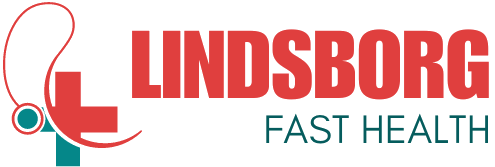Joint replacement surgery, also known as arthroplasty, involves removing damaged or diseased joint surfaces and replacing them with artificial implants made of metal, plastic, or ceramic materials. This procedure is commonly performed for conditions such as osteoarthritis, rheumatoid arthritis, and severe joint trauma, resulting in improved joint function and pain relief for patients.
Spinal Surgery Spinal surgery encompasses a variety of procedures aimed at addressing spinal disorders, deformities, and injuries. These may include decompression surgeries to relieve pressure on spinal nerves, fusion procedures to stabilize the spine, and disc replacement surgeries to restore mobility and function. Spinal surgery requires careful evaluation and personalized treatment planning to achieve optimal outcomes for patients.
VI. Emerging Trends in Orthopedic Therapies
Regenerative Medicine Regenerative medicine holds promise for orthopedic applications by harnessing the body’s natural healing mechanisms to repair damaged tissues and promote tissue regeneration. Stem cell therapy, for example, involves the use of stem cells derived from bone marrow, adipose tissue, or other sources to stimulate tissue repair and regeneration in injured joints or tissues. Platelet-rich plasma (PRP) therapy is another regenerative approach that utilizes concentrated platelets from the patient’s own blood to promote healing and reduce inflammation.
3D Printing in Orthopedics Advancements in 3D printing technology have revolutionized the field of orthopedics by enabling the creation of patient-specific implants, surgical guides, and anatomical models. 3D-printed implants can be customized to match the patient’s unique anatomy, resulting in better fit, function, and long-term outcomes. This technology also allows for rapid prototyping and iterative design improvements, leading to greater innovation and customization in orthopedic care.
Robotics in Orthopedic Surgery Robot-assisted orthopedic surgery involves the use of robotic systems to assist surgeons in performing precise and minimally invasive procedures. These systems utilize advanced imaging, navigation, and robotic arms to enhance surgical accuracy, reduce complications, and improve patient outcomes. Robotics can be used in various orthopedic procedures, including joint replacement surgery, spine surgery, and trauma surgery, offering benefits such as enhanced visualization, reduced radiation exposure, and shorter recovery times.
VII. Integrative Approaches to Orthopedic Care
Acupuncture and Acupressure Acupuncture and acupressure are traditional Chinese medicine techniques that involve the stimulation of specific points on the body to alleviate pain, reduce inflammation, and promote healing. These therapies may be used as adjuncts to conventional orthopedic treatments to enhance pain relief and improve overall well-being for patients.
Yoga and Pilates Yoga and Pilates are mind-body exercises that focus on improving flexibility, strength, balance, and posture through controlled movements and breathing techniques. These practices can be beneficial for individuals with orthopedic conditions by increasing joint mobility, muscle strength, and relaxation, thereby reducing pain and improving functional capacity.

Dietary Supplements and Nutrition Nutrition plays a critical role in supporting musculoskeletal health and promoting healing and recovery from orthopedic injuries or surgeries. Dietary supplements such as calcium, vitamin D, glucosamine, and omega-3 fatty acids may help support bone health, reduce inflammation, and enhance tissue repair. A balanced diet rich in fruits, vegetables, lean proteins, and whole grains is essential for overall health and well-being.
VIII. Rehabilitation and Recovery
Rehabilitation and recovery are essential components of orthopedic treatment, aiming to restore function, mobility, and independence following injury or surgery. Physical rehabilitation programs focus on strengthening muscles, improving range of motion, and enhancing functional skills through targeted exercises, manual therapy techniques, and assistive devices. Patients are encouraged to actively participate in their rehabilitation process and adhere to prescribed treatment protocols to achieve optimal outcomes.
IX. Patient Education and Empowerment
Empowering patients with knowledge and understanding of their orthopedic conditions and treatment options is crucial for promoting active participation in their care and optimizing outcomes. Patient education initiatives may include providing information about the nature of the condition, available treatment modalities, potential risks and benefits, and self-management strategies for symptom relief and prevention. Engaging patients in shared decision-making and encouraging open communication between patients and healthcare providers can foster a collaborative approach to orthopedic care.
X. The Role of Technology in Orthopedic Care
Advancements in technology have significantly impacted the field of orthopedic care, offering innovative solutions for diagnosis, treatment, and monitoring of musculoskeletal conditions. Telemedicine platforms enable remote consultations and virtual follow-up appointments, expanding access to orthopedic care for patients in rural or underserved areas. Wearable devices such as activity trackers and motion sensors provide real-time data on movement patterns, gait analysis, and rehabilitation progress, allowing for personalized monitoring and feedback. Artificial intelligence (AI) algorithms and predictive analytics are being increasingly utilized in orthopedics for image interpretation, treatment planning, and outcome prediction, offering valuable insights and decision support for healthcare providers.
XI. Challenges and Future Directions
Despite the advancements in orthopedic therapies, several challenges remain, including issues related to accessibility, affordability, and equitable distribution of care. Disparities in access to orthopedic services based on geographical location, socioeconomic status, and insurance coverage can impact patient outcomes and contribute to healthcare disparities. Addressing these challenges requires collaborative efforts from healthcare providers, policymakers, and stakeholders to improve healthcare infrastructure, expand insurance coverage, and implement innovative care delivery models. Looking ahead, future directions in orthopedic care may focus on advancing personalized medicine approaches, integrating digital health technologies, and enhancing interdisciplinary collaboration to improve patient outcomes and quality of life.
XII. Conclusion
Orthopedic therapies play a vital role in managing a wide range of musculoskeletal conditions, injuries, and disorders, offering patients hope for relief, recovery, and improved quality of life. From non-surgical interventions to complex surgical procedures, orthopedic care encompasses a multidisciplinary approach aimed at restoring function, reducing pain, and enhancing overall well-being for patients. As technology continues to evolve and innovations emerge, the future of orthopedic care holds promise for more personalized, effective, and accessible treatments, ultimately transforming the landscape of musculoskeletal medicine.
